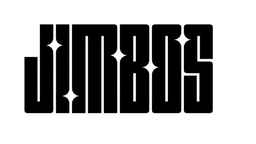Everything DIY Detail Got Wrong in Their “How to Polish for the First Time” Video
We’re all for educating beginners. And on the surface, DIY Detail’s video titled “HOW TO POLISH FOR THE FIRST TIME! Teaching a beginner” looks helpful. But once you watch it closely, you’ll notice several red flags—misleading technique, skipped prep, and product confusion.
Let’s break down exactly what went wrong—and how to actually teach someone to polish safely and effectively.
1. No Clear Prep Discussion
The video rushes straight into polishing without properly discussing or demonstrating a decon process. No mention of:
- Claying the surface
- Removing embedded contaminants
- Ensuring the panel is stripped of wax/sealants
👉 Why this matters: Polishing over bonded contaminants increases the risk of micro-marring and reduces pad efficiency.
2. Poor Lighting and Inspection Technique
They polish without demonstrating proper panel inspection under light. No swirl finder light, no clear before/after sectioning. Just general “it looks better” vibes.
👉 Why this matters: Beginners need to understand how to visually inspect paint correction results—not guess.
3. Product Confusion and Over-Reliance on Gold Standard Polish
They rely solely on Gold Standard Polish, claiming it's all you need—but without clarifying it has low actual cutting power and includes gloss-enhancing fillers.
👉 Why this matters: Beginners are misled into thinking it’s doing more correction than it really is. And they don’t learn the importance of abrasive behavior.
4. No Mention of Pad Selection Strategy
There’s little-to-no guidance on pad selection. No explanation of:
- Why you’d use a cutting vs finishing pad
- How pad density affects correction
- When to change pads during a job
👉 Why this matters: Pad choice is half the battle when polishing—and this is where most beginners struggle.
5. They Skip the Most Important Message: Results Come from Testing
They don’t teach beginners to do a test section, evaluate results, and adjust. Instead, the video promotes a plug-and-play approach that rarely works in the real world.
What Beginners Should Actually Know
- ✅ Always decon and clay before polishing
- ✅ Use proper lighting to inspect results
- ✅ Match polish to the paint condition, not marketing hype
- ✅ Test pad + polish combos on a 2x2 section first
- ✅ Use a product that gives real correction—not filler gloss
What to Use Instead: Picture Perfect Polish
Picture Perfect Polish was designed to give beginners and pros the same thing: real correction, zero dust, and flawless finishes—no tricks, no fillers, no hazing.
It’s pad dependent, which means it teaches proper technique by rewarding good prep and pad choice. Exactly what new polishers need to learn from day one.
"I learned more in 10 minutes using Picture Perfect Polish than I did from watching hours of YouTube. It's predictable, clean, and results-driven."
– Rob F., North Carolina
Final Thoughts
DIY Detail meant well—but teaching beginners without the right foundation just sets them up for confusion, frustration, and mediocre results.
If you want to polish like a pro, use products that behave like pro tools—and teach you something along the way.



